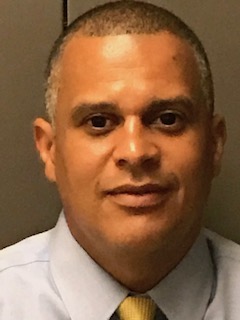
In early March, educators across the country were forced to confront a harsh and sobering reality: If they were going to protect children and communities from COVID-19, they would have to shift instruction from brick-and-mortar classrooms to virtual ones.
School administrators focused on the immediate logistical challenges associated with children learning from their homes—getting technology to students; increasing wireless access; and continuing to feed the high number of students who qualify for free and reduced-price lunch. Teachers concentrated on adapting lesson plans for online learning; making sure families and caregivers could use the educational platforms and video conferencing apps; and offering suggestions for replicating the school-day structure at home.
But in the midst of that urgent and sudden transformation, some districts overlooked an important question: What happens to students whose parents are essential employees? Doctors, nurses, hospital cafeteria workers and others in the health care field don’t have the option of working remotely, creating a potential crisis for those workers whose children are suddenly at home all day.
Who will care for their children in this era of shuttered schools and virtual learning?
Guilford County Schools in central North Carolina came up with a solution. On March 16, as we were scrambling to transfer learning online, Superintendent Sharon Contreras presented me with an additional mission: Establish and manage a system of free school-run childcare centers for children of our local medical personnel.
Read: Updated: 311 free K-12 resources during coronavirus pandemic
Developing childcare protocol
My first consideration was staffing. To ensure safety and success, we needed the right kinds of professionals—and enough of them. My leadership team and I employed staff from GCS’s After-School Enrichment Services program to care for the children. They developed the following protocol that guided the setup of each center and how to manage each center to ensure safety:
- Have nurses on-site to take temperatures and screen for symptoms.
- Create an isolation room should students or staff present symptoms.
- Outline the steps custodial staff should take morning, noon and night to keep classrooms sanitized.
As we were scrambling to transfer learning online, Superintendent Sharon Contreras presented me with an additional mission: Establish and manage a system of free school-run childcare centers for children of our local medical personnel.
- Maintain an adult-to-student ratio of 1-to-8—with no more than 48 students in six classrooms per site.
- Provide supplies to each school, including paper towels, toilet paper, disinfectant, disposable rubber gloves and hand sanitizer.
- Employ custodians and bus drivers to wipe down “touchpoints” several times a day.
The planning involved long days, but not many of them. The first site opened just one week later on March 23.
We started with children of employees from our local hospitals since they’re on the front lines and have the greatest impact on public health. When spring break ended, we opened slots to local emergency medical service and public health workers as well.
Read: How teachers are returning to schools in some districts
Managing (safely) three centers each weekday
Today, we’re running three centers from 6 a.m. to 7:30 p.m. on weekdays: Shadybrook Elementary in High Point, and Hunter Elementary and Irving Park Elementary in Greensboro. The program has 70 students enrolled, and our largest daily attendance was 52. (Our sites close June 5.)
We offer a balanced day for our students, including safe recreational activities; nutritious breakfasts, lunches and snacks; and opportunities for instruction. Because they can access their online learning during the day, you’ll often find kids on computers doing schoolwork.
The sites were already licensed through the North Carolina Department of Health and Human Services (DHHS) and stocked with the materials and activities we use for after-school care. In addition, our workers are experienced in leading students in engaging activities and creating a daily schedule similar to what we do for teacher workdays. Having the facilities and staff that already meet DHHS licensure requirements is significant. Operating as a licensed childcare facility is giving our district access to DHHS subsidies, which will help finance our operations since we’re not charging families.
We follow DHHS guidance regarding health protocols and use of masks. Masks and gloves are readily available and temperatures of staff and students are taken upon arrival. When feasible, staff wear cloth face coverings, particularly if they are unable to maintain social distancing of six feet or more. Masks are not worn by students unless they present symptoms during the day. At that point, they would be sent to an isolation room and monitored until parent pickup.
Since we have a maximum of eight students per class, we are able to maintain social distancing among them. Meals and snacks are served in the classrooms, and students have recess but only with their group of eight. We enforce social distancing during recess, too, and do not allow use of the playground equipment.
Read: How will coronavirus challenges impact teacher shortages?
‘Meaningful service’
We’re providing a meaningful service to our health care workers who are on the front lines fighting COVID-19. Because of this program, health care employees can go do their tough work every day without the burden of what will happen with their children, so they can continue serving our community.
Weaver Walden is a school support officer for Guilford County Schools in central North Carolina. GCS ranks 47th in the country in student population, with more than 73,000 students and 10,000 employees spread across 650 square miles.
DA’s coronavirus page offers complete coverage of the impacts on K-12.







